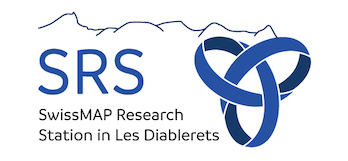Speaker
Description
Renormalization group flows of the Ginzburg-Landau potential of chiral symmetry restoration are calculated for a general number of quark flavors (N_f), with the inclusion of all possible (perturbatively) relevant and marginal operators in d = 3 spatial dimensions. We find new, potentially infrared stable fixed points spanned throughout the entire N_f range. By conjecturing that the thermal chiral transition is governed by these ``flavor continuous" fixed points, stability analyses show that for N_f >= 5 the chiral transition is of second-order, while for N_f =2,3,4, it is of first-order. We argue that the U_A(1) anomaly controls the strength of the first-order chiral transition for N_f = 2,3,4, and makes it almost indistinguishable from a second-order one, if it is sufficiently weak at the critical point. This could open up a new strategy to investigate the strength of the U_A(1) symmetry breaking around the critical temperature.

